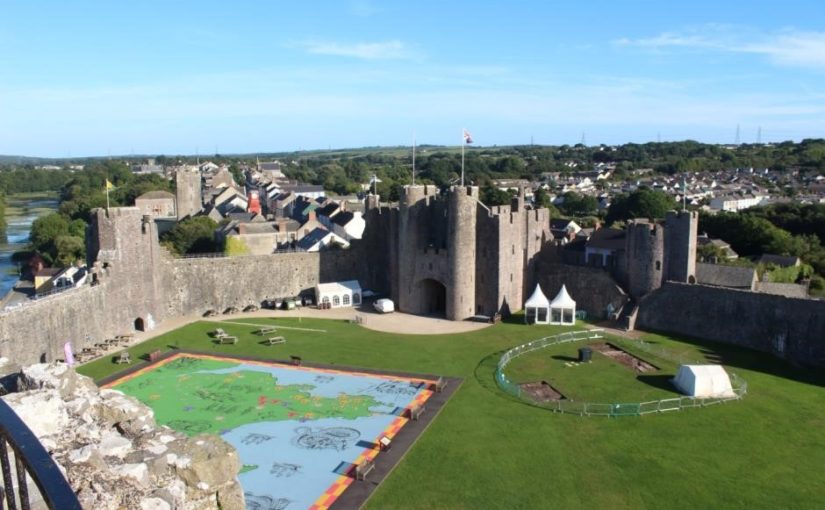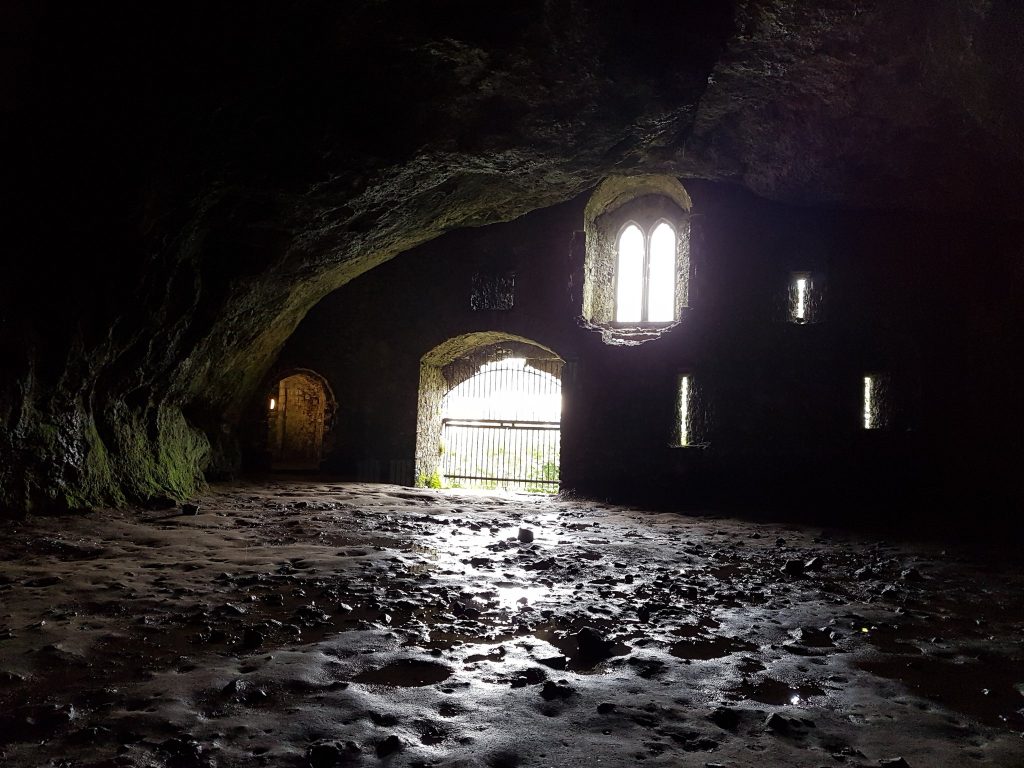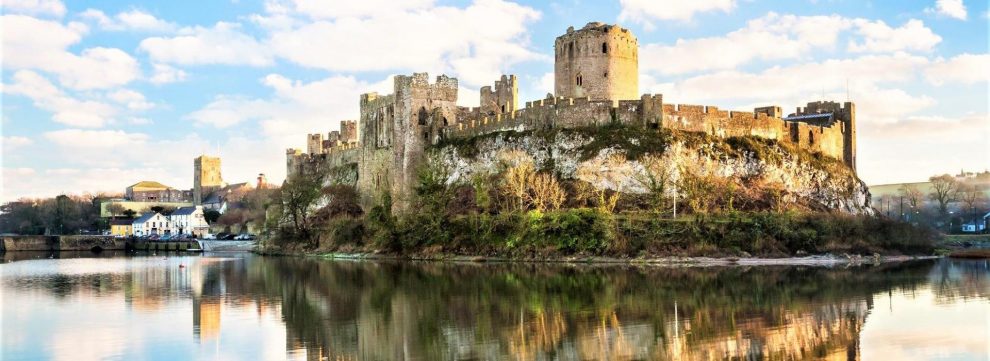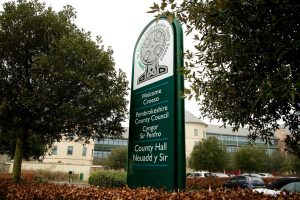SAT in the heart of Pembroke in Pembrokeshire, the town which gave the county its name, lies Pembroke Castle, dating back nearly 1000 years.
In the modern era, Pembroke Castle has been restored and provides modern amenities, as the main tourist attraction of the area.
As well as welcoming history buffs and sightseers, it even hosts live music, with the likes of Status Quo and Bonnie Tyler playing to a packed crowd prior to the pandemic.
It’s also been used as a filming location for several productions, such as the films Me Before
You and The Bad Education Movie.
A Thousand Year History
Pembroke Castle stands on a site that has been occupied at least since the Roman period. Roger de Montgomerie, 1st Earl of Shrewsbury founded the first castle in the 11th century – when it was originally made from earth and wood.
This structure was challenged very quickly, as it was the target of several attacks and sieges
in the 30 or so years after it was originally built.
When William Rufus died, Arnulf de Montgomery joined his elder brother, Robert of Bellême,
in rebellion against Henry I, William’s brother and successor as king.
When the rebellion failed, he was forced to forfeit all his British lands and titles. Henry
appointed his castellan, but when the chosen ally turned out to be incompetent, the King
reappointed Gerald in 1102.
By 1138 King Stephen had given Pembroke Castle to Gilbert de Clare who used it as an important base in the Norman invasion of Ireland.
In August 1189 Richard I arranged the marriage of Isabel, de Clare’s granddaughter, to William Marshal who received both the castle and the title, Earl of Pembroke.
He had the castle rebuilt in stone and established the great keep at the same time. Marshal was succeeded in turn by each of his five sons. His third son, Gilbert Marshal, was responsible for enlarging and further strengthening the castle between 1234 and 1241.

All of Marshal’s sons died childless. In 1247, the castle was inherited by William de Valence (a half-brother of Henry III), who had become Earl of Pembroke through his marriage to Joan de Munchensi, William Marshal’s granddaughter.
The de Valence family held Pembroke for 70 years. During this time, the town was fortified with defensive walls, three main gates and a postern.
Pembroke Castle became de Valence’s military base for fighting the Welsh princes during the conquest of North Wales by Edward I between 1277 and 1295. On the death of Aymer de Valence, 2nd Earl of Pembroke, William de Valence’s son, the castle passed through marriage to the Hastings family. In 1389, 17-year-old John Hastings died in a jousting accident, ending a line of inheritance stretching back 250 years.
Pembroke Castle then reverted to Richard II. Short tenancies were then granted by The Crown for its ownership. By 1400 Owain Glyndŵr had begun a rebellion in Wales.
However, Pembroke escaped attack because the castle’s Constable, Francis а Court, paid off Glyndŵr in gold.
Then in 1452, the castle and the earldom were presented to Jasper Tudor by his half-brother Henry VI. Tudor brought his widowed sister-in-law, Margaret Beaufort, to Pembroke where, in 1457, she gave birth to her only child, who was to become King Henry VII of England.
In the 15th and 16th centuries, the castle was a place of peace until the outbreak of the English Civil War. Although most of South Wales sided with the King, Pembroke declared for Parliament.
It was besieged by Royalist troops but was saved after Parliamentary reinforcements arrived by sea from nearby Milford Haven. Parliamentary forces then went on to capture the Royalist castles of Tenby, Haverfordwest and Carew.
In 1648, at the beginning of the Second Civil War, Pembroke’s commander Colonel John Poyer led a Royalist uprising alongside Colonel Powell, Tenby Castle, and Sir Nicholas Kemoys, Chepstow Castle.
Oliver Cromwell came to Pembroke on 24 May 1648 and took the castle after a seven-week siege. Its three leaders were found guilty of treason and Cromwell ordered the castle to be destroyed.

Townspeople were even encouraged to disassemble the fortress and re-use its stone for their purposes.
The castle was then abandoned and allowed to decay. It remained in ruins until 1880, when
a three-year restoration project was undertaken.
Nothing further was done until 1928, when Major-General Sir Ivor Philipps acquired the castle and began an extensive restoration of the castle’s walls, gatehouses, and towers.
After his death, a trust was set up for the castle, jointly managed by the Philipps family and
Pembroke town council.
The Castle’s Features
Possibly the most interesting feature of the castle lies beneath it.
Wogan Cavern, below the Great Hall, is a massive limestone cave. Archaeologists have found stone tools here, showing that it was inhabited as far back as the Middle Stone Age.
They also found Roman coins, an indication that the Romans may have used the cave as a trading area. And, because this is Wales, the cavern is also said to be the lair of a fierce dragon.
The Norman castle dwellers built a stairway down to the cavern and fortified it with a wall and barred gateway. There was access to the river and it may have been used as a way for people and goods to enter the castle. It was also used as a store room.
The interior grounds are dominated by the 80ft stone keep and high battlements that were once used to defend the castle.
The castle also boasts:
• Impressive 5 storey central keep with intact domed roof.
• A complex gatehouse that dominates Pembroke’s Main Street.
• Historical displays in the gatehouse rooms.
• A maze of tunnels, stairs, towers and battlements.
• Circular path around inside and outside of the mill pond.



















Add Comment